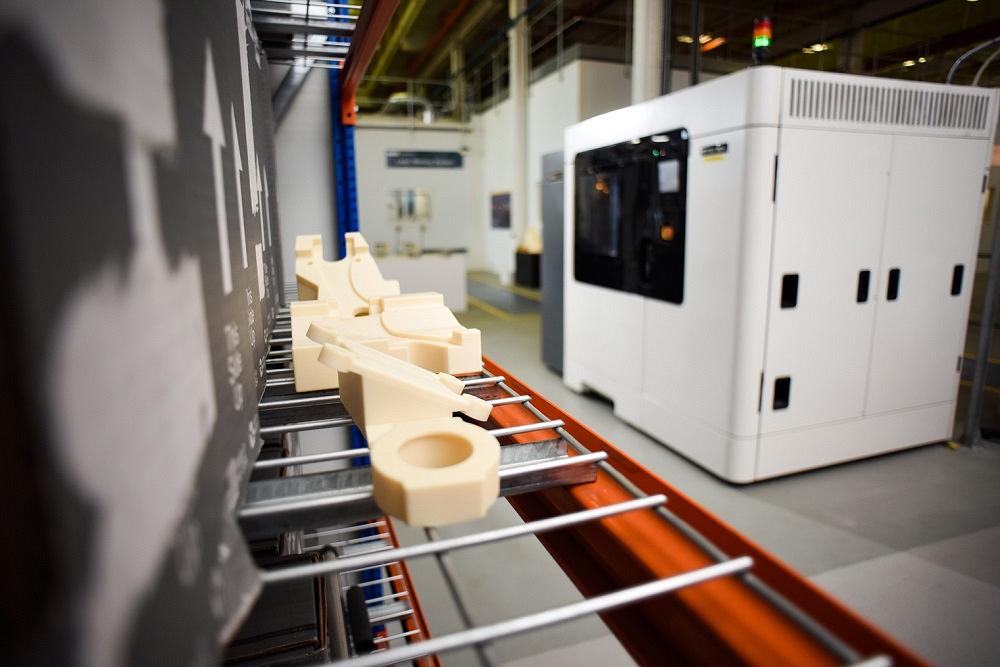- FMA
- The Fabricator
- FABTECH
- Canadian Metalworking
Our Publications
Categories
- Additive Manufacturing
- Aluminum Welding
- Arc Welding
- Assembly and Joining
- Automation and Robotics
- Bending and Forming
- Consumables
- Cutting and Weld Prep
- Electric Vehicles
- En Español
- Finishing
- Hydroforming
- Laser Cutting
- Laser Welding
- Machining
- Manufacturing Software
- Materials Handling
- Metals/Materials
- Oxyfuel Cutting
- Plasma Cutting
- Power Tools
- Punching and Other Holemaking
- Roll Forming
- Safety
- Sawing
- Shearing
- Shop Management
- Testing and Measuring
- Tube and Pipe Fabrication
- Tube and Pipe Production
- Waterjet Cutting
Industry Directory
Webcasts
Podcasts
FAB 40
Advertise
Subscribe
Account Login
Search
Aerospace manufacturer cuts assembly tool production time with additive manufacturing
- September 24, 2018
- Article
- Additive Manufacturing
Situation
GKN Aerospace serves more than 90 percent of the world’s aircraft and engine manufacturers with aerostructures, engine systems, and technologies.
Its 1,500-employee Filton manufacturing plant in Bristol, U.K., was experiencing a lead time of several weeks to produce metal or plastic replacement tools. Considering this plant designs and manufactures large and complex structural assemblies and metallic components for so many aerospace manufacturers, this lead time was having a negative impact on productivity.
Resolution
In a bid to cut lead times for production line tools and to create complex parts that would be impossible to make with traditional manufacturing methods, the company decided to invest in the Stratasys F900 Production 3-D printer.
Now, with the ability to use an in-house production 3-D printer to do the same job, the burden to produce a replacement tool has been removed and the responsiveness to manufacturing requirements improved.
“We can now cost-effectively produce tools for our operators within three hours,” said Tim Hope, additive manufacturing center manager at GKN Aerospace. “This saves critical production time, and by printing in engineering-grade thermoplastics, we can produce 3-D-printed tools with repeatable, predictable quality every time, all while matching the quality of a traditionally produced tool and reducing the costs and concessions compared to equivalent metallic tooling.”
In addition to improving production times, the integration of additive manufacturing also has removed design constraints for multiple tooling applications, giving the company new freedom to design complex tools.
“One of the key benefits of additive manufacturing is the creative freedom this technology affords users,” explained Hope. “The F900 offers the largest build-size of any FDM 3-D printer, enabling us to rapidly produce tools to meet any requirements. Most notably, complex geometries and cavities that would otherwise be problematic are now practical. We’re using [the 3-D printer] to design and 3-D print previously inconceivable tools that enable us to manufacture complex parts that are uneconomical or just physically impossible by other methods.”
In addition to design freedom benefits, GKN Aerospace also has experienced a 40 percent decrease in material waste.
Hope anticipates a greater move toward the use of FDM additive manufacturing to produce high-value, flight-critical, end-use composite parts.
Stratasys * www.stratasys.com
About the Publication
- Podcasting
- Podcast:
- The Fabricator Podcast
- Published:
- 04/16/2024
- Running Time:
- 63:29
In this episode of The Fabricator Podcast, Caleb Chamberlain, co-founder and CEO of OSH Cut, discusses his company’s...
- Trending Articles
- Industry Events
16th Annual Safety Conference
- April 30 - May 1, 2024
- Elgin,
Pipe and Tube Conference
- May 21 - 22, 2024
- Omaha, NE
World-Class Roll Forming Workshop
- June 5 - 6, 2024
- Louisville, KY
Advanced Laser Application Workshop
- June 25 - 27, 2024
- Novi, MI



























